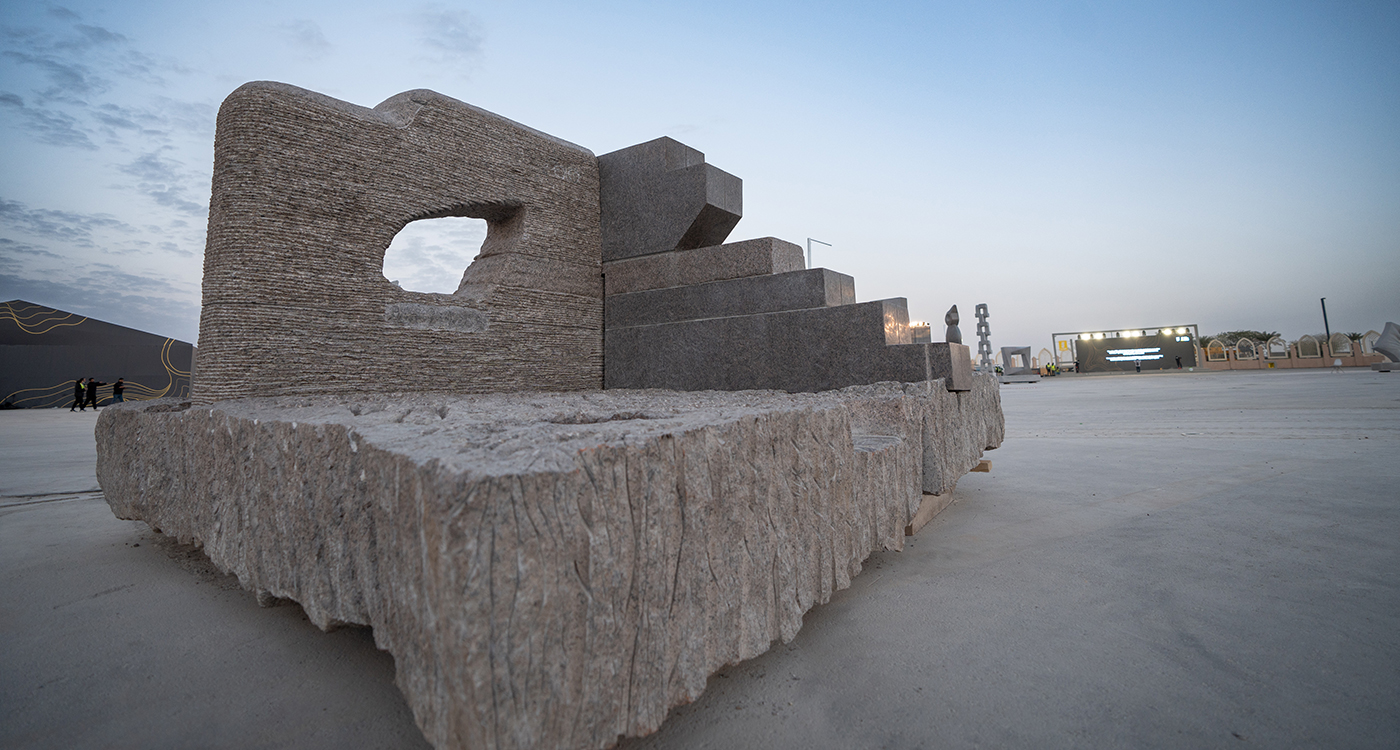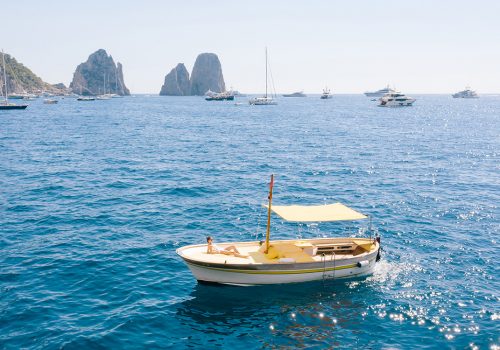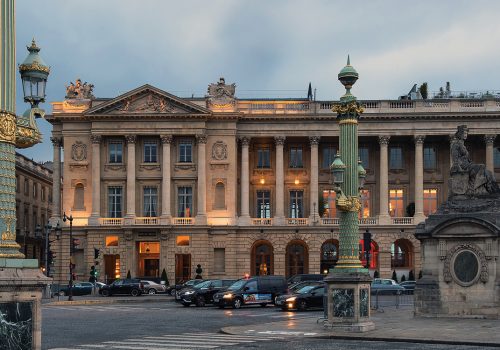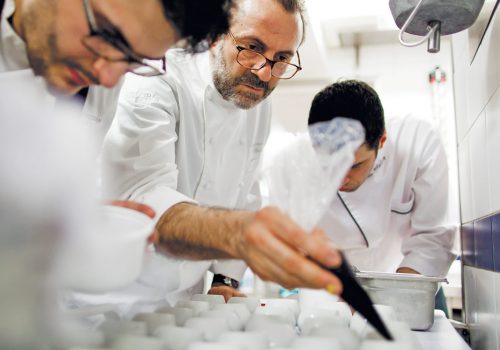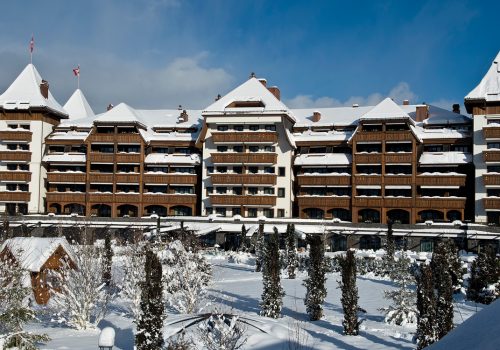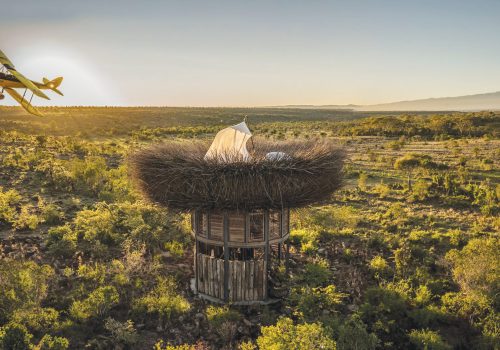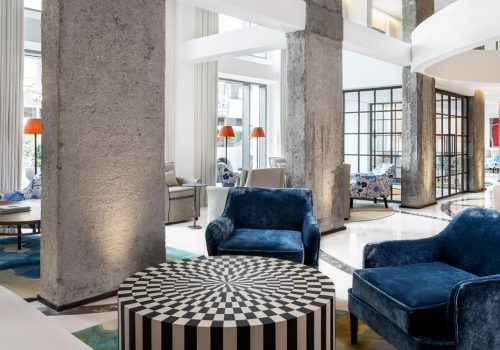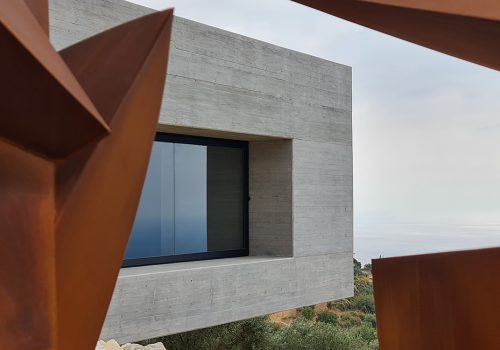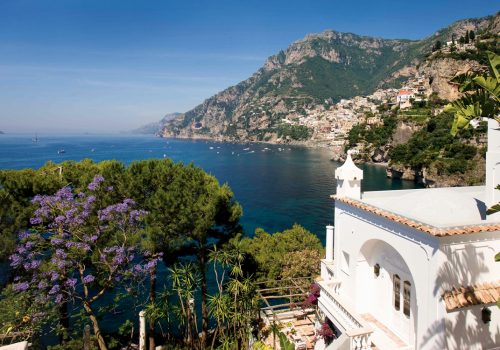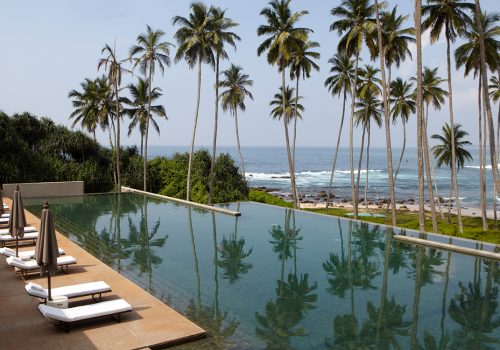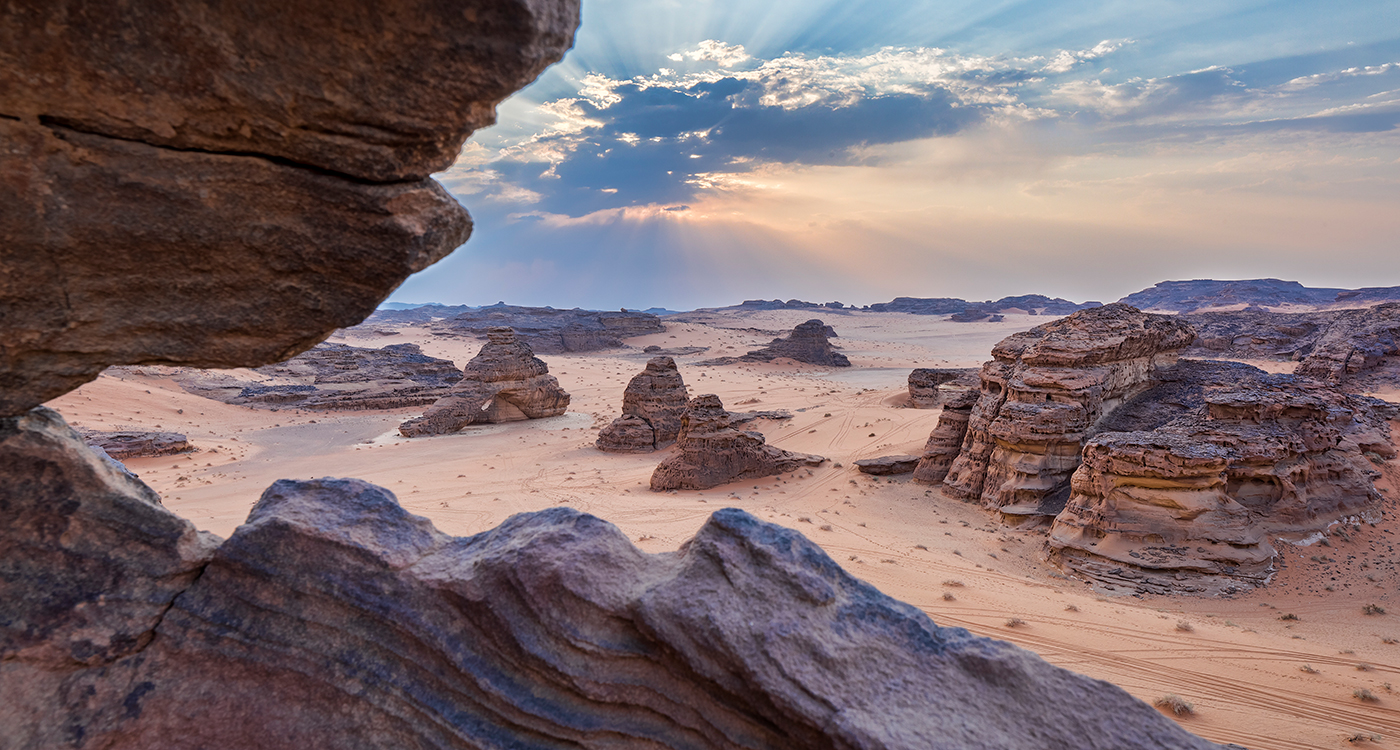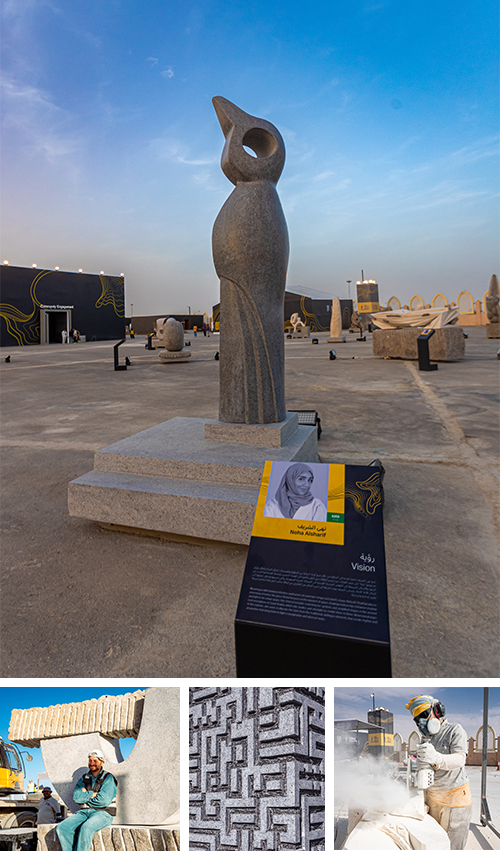
OPENING IMAGE: ‘Riyadh’s Eye’ by Mohammad Al-Faris, emphasises the significance of harmony between natural heritage and modern engineering. ABOVE, TOP: ‘Vision’ is a piece by Noha Alsharif, a Saudi lecturer at Qassim University, who went to SOAS before obtaining a PhD from the University of Winchester. BOTTOM LEFT: Sasho Sazdovski sits on his piece representing balance and reciprocity. He says it “encourages us to think about the things we take for granted.” BOTTOM CENTRE: Inspired by the writings of the Quran, this piece was made by the Romainian artist Ana Maria Negara. BOTTOM RIGHT: Tuwaiq began on January 8th with the artists doing live sculpting, then the exhibition was from February 5th to 10th.
Artists gathered from across the globe in the Saudi Arabian capital of Riyadh this January for the beginning of the annual Tuwaiq Sculpture symposium, a month-long creative residency in which the participants create large-scale works in a public setting.
Previously, the event was a competition with only one winner. However, for this year, the organisers decided to opt for a more collaborative framework. More than 600 artists applied to join – almost double that of last year’s event – from which 30 participants were chosen by a panel of judges to take part.
“When the artists live together and spend time together, there’s a priceless transfer of knowledge and exchange of experiences,” curator Marek Wolynski told Official Bespoke. “It’s absolutely stunning to see how the artists responded to the theme of ‘Energy of Harmony’ this year, and how they have tried to encapsulate those processes of introducing and witnessing transformative change.
“We have a range of approaches,” he said, “from very geometrical to very organic and fluid, trying to touch upon the balance we all strive for in our lives – balance between contrast and similarity, repetition and difference, abundance and scarcity and what’s in between – and how that intangible idea can be captured with a very tangible material.”
Now in its fourth edition, the symposium forms an important part of Riyadh Art’s greater public arts project to create a ‘gallery without walls,’ housing more than 1,000 artworks around the city.
The completed works were revealed in an exhibition in February, held at the artist’s worksite in Durrat Al Riyadh, before being permanently relocated to Qasr Al-Hukm.
“The facade of Qasr Al-Hukm was created using Riyadh stone, so it’s very interesting to see how these artworks can be embedded into the plaza of Qasr Al-Hukm,” explained Tuwaiq Sculpture director Sarah Alruwayti. “It’s actually the first edition where we use stone sourced from the kingdom, with granite sourced from Najran and the sandstone from Riyadh.”
“We also had educational visits coming in from universities and schools, as well as assistants to the artists who are sculpting students,” she said. “It was really amazing to see how the younger generation can learn from these masters of sculpting. We have a bigger community engagement programme, with more than 65 activities and activations happening, free workshops and planning discussions.”
Despite the field of stone sculpting being historically dominated by men, especially in KSA, Tuwaiq Sculpture featured nearly 50 per cent female participants in this year’s symposium. This includes multiple female Saudi artists, highlighting the artistic talents of Saudi women and the changing state of female representation in the country.
“We had male sculptors really looking up to them and saying that we need to learn from Saudi female artists how to transform the material, persevering and dedicated to the ultimate goal,” said Wolynski. “That motivation touched upon this absolutely, and can be felt and witnessed through these artworks.”
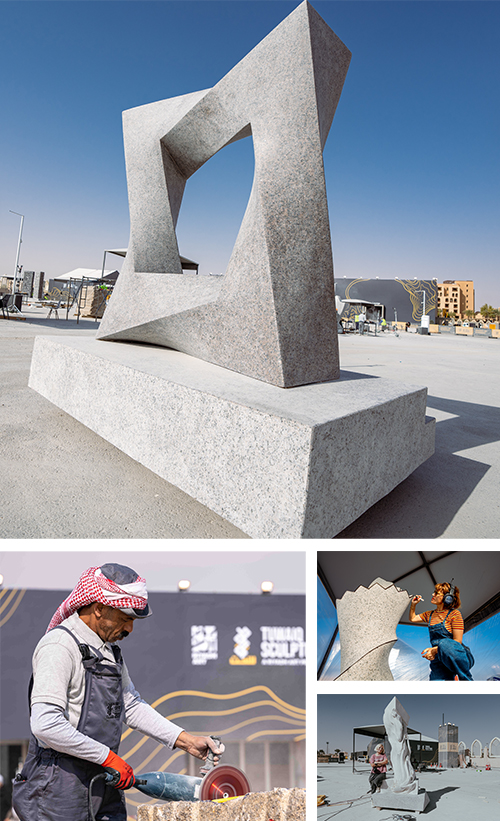
ABOVE TOP: Marino di Prospero was one of the most accomplished sculptors at the symposium. He created this ‘Lockdown Window’ from a single block of granite. BOTTOM LEFT: An assistant helps carve into Belgian sculptor Sylvain Patte’s artwork, ‘Expansion.’ MIDDLE RIGHT: Turkish sculptor Nilhan Sesalan had to be hoisted three-metres up so she could add the finished outline to her piece, ‘Existence’. BOTTOM RIGHT: Russian artist Vasilisa Chugunova sits proudly next to her piece, ‘Energy of Water,’ which considers the power of this natural resource.
Azhar Madlouh’s ‘Permanence’ represents the endurance of the country through its bold stone circles. At the same time, the sculpture also expresses the transmission of energy and ideas from one person to another, with its carved, intersecting lines, in a continuous cycle of exchange.
“I started sculpting in 2014, but I have been an artist since 1994,” Madlouh told us. “After finishing my masters in Fine Arts, I travelled to Egypt and took courses to learn more about sculpting. I first started with clay and ceramics, because it was easier to use, then moved to stone when I became more confident.
“I attended the first symposium in 2019,” she continued. “I was the only woman at the time, so it’s great to see more women now, reflecting how the local art scene has changed.”
Wafa Al-Qunibit’s ‘Harmony’ draws inspiration from her own work in traditional Arabic calligraphy, but with a modern, bubble-like font. She wanted to focus on combining themes of identity with modern and abstract art.
“The ‘All-Hearing’ is one of the ninety-nine names of God,” explained Qunibit. “I tried to make it in the shape of the ear, because it will be hearing for the whole area, and it’s huge because the meaning is – for us – very important and very traditional.
“This is not just any stone; this is granite,” she added. “It’s very hard and – with this shape – it took me a long time. Each hole took two days. To be honest with you, even in the international scene, they still find it strange to see a woman holding the grinder. Some people are surprised. Some people are proud and some people are shocked, but – when they see what you can do – they respect it.”
After show, the national heritage pieces will go to the Qasr Al-Hukm historical district and join the labours of more than 90 previous Tuwaiq guest artists, where they’ll exist in dialogue with architecture produced from the same stone around them.


